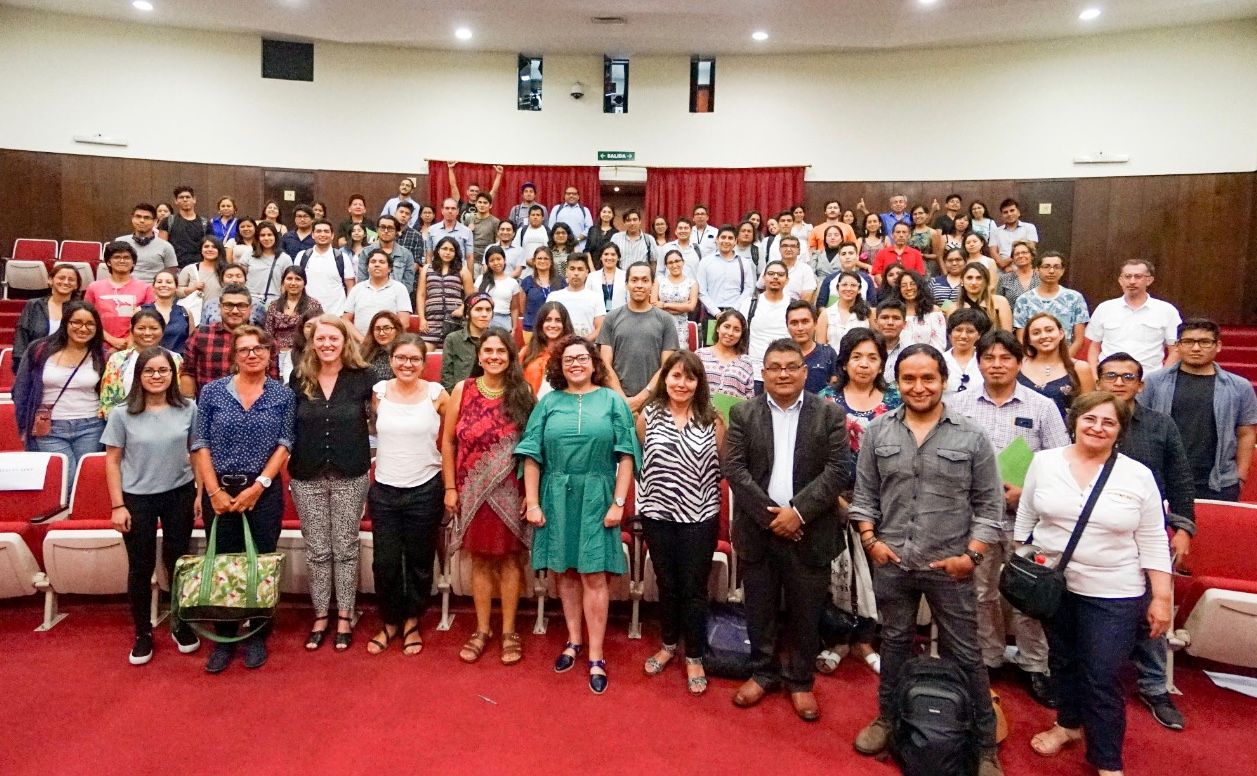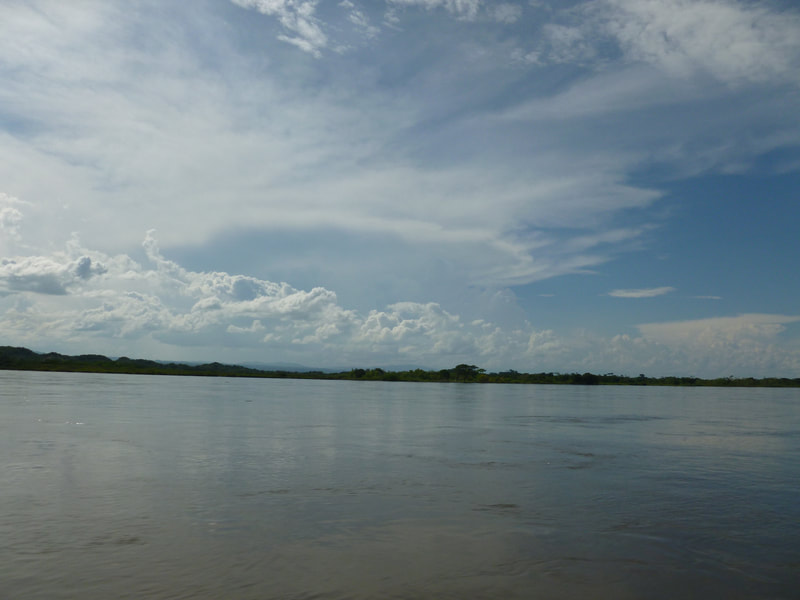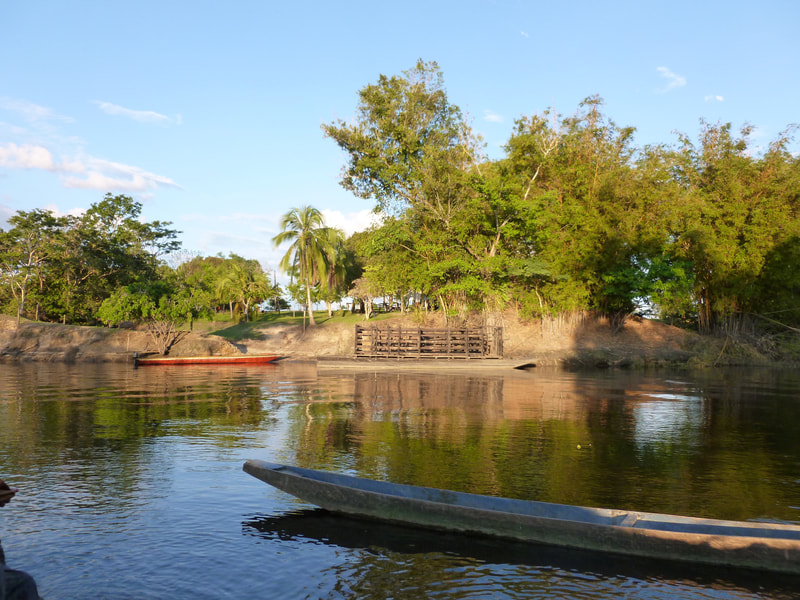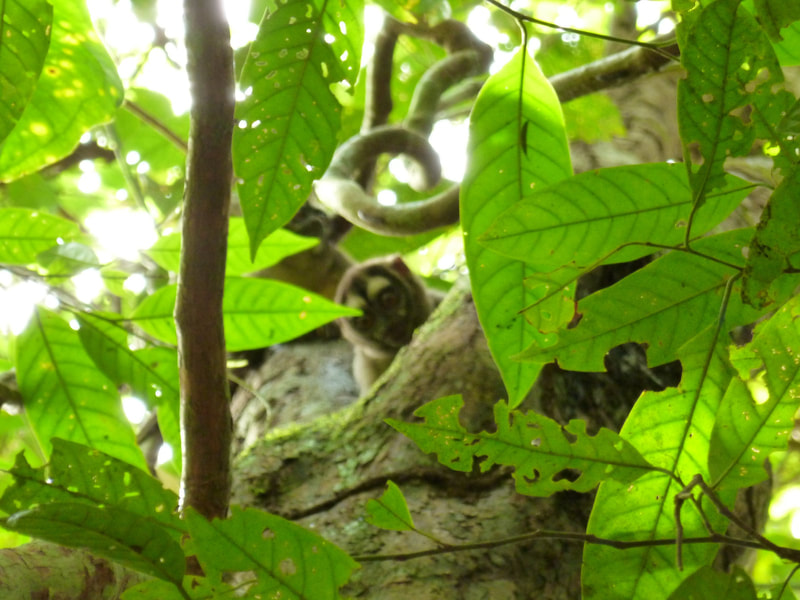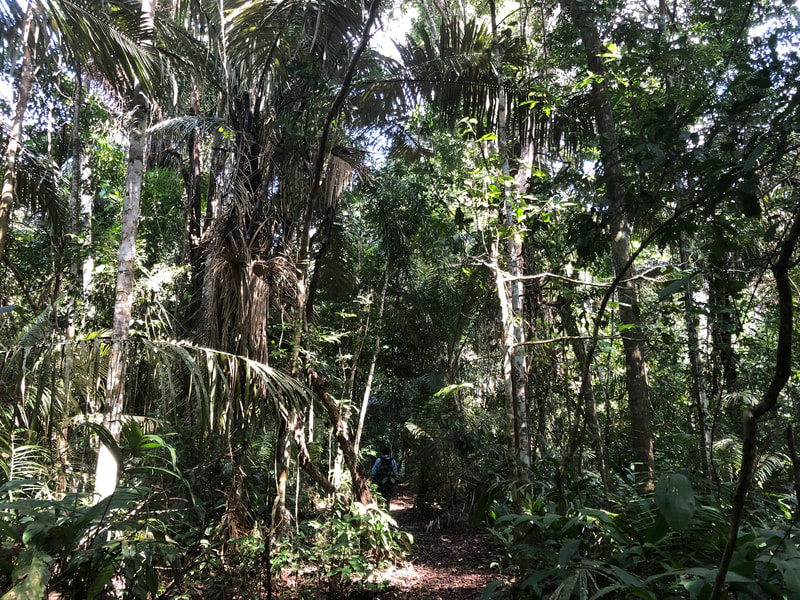ATLAPETES PROJECT: ECOLOGY AND CONSERVATION OF THE ANTIOQUIA BRUSH-FINCH (ATLAPETES BLANCAE)In 2007, Thomas Donegan described a species of Brush-finch from a couple of specimens collected in 1970's in Antioquia north of the City of Medellin. It was assumed to be extinct, until recently, when Sergio Chaparro and a group of local and Universidad de Antioquia researchers rediscovered the Antioquia Brush finch from a couple of localities near the Municipality of San Pedro de los Milagros, Antioquia (see publication here). Since then, this project has focused on generating information about its natural history and geographic distribution as well as outreach and local environmental education to protect its habitat and conserve this nearly extinct species.
|
EXPLORING THE ROLE OF MIMETISM ON THE EVOLUTION OF NEOTROPICAL BUTTERFLIES
This is an exciting project led by Dr. Elena Ortiz Acevedo which focuses on investigating how mimetic rings among butterflies in the genus Callicore, Asterope and Prepona have coevolved similar coloration patterns likely because of strong predation pressures. In the first phase of this project we will explore if coloration patterns of co-distributed species are more similar than expected by chance and at the same time investigating if phenotypically similar species share distribution ranges.
URBAN WETLANDS IN LATIN AMERICA: A SOLUTION FOR SUSTAINABLE CITIES SDG 11
The objective of this study is to consolidate interdisciplinary research and cooperation to promote more sustainable and resilient cities based on the protection of urban wetlands.
Specifically we are doing:
Specifically we are doing:
- Conduct a multitemporal comparative analysis of the loss of urban wetlands located in Barranquilla (Colombia), Lima (Peru) and Concon in Valparaiso region (Chile).
- Discuss the role of public policies and environmental regulations in the prevention of urban wetland losses.
- Evaluate the mechanisms of citizen participation top-down and bottom-up linked to urban wetlands.
- Propose guidelines to promote more sustainable and resilient Latin American cities based on increasing the capacity of territorial planning and participatory management for the preservation and recovery of urban wetlands, in accordance with SDG targets
ENVIRONMENTAL EFFECTS ON BIRD COMMUNITY COMPOSITIONThis study focuses on understanding how biotic and abiotic mechanisms alternatively explain species diversity and bird community composition along environmental gradients. We now hypothesize that turnover in bird community composition along precipitation gradients results from a change in the mechanisms structuring communities. While on the wet end biotic interactions such as predation are more important, in dry forests, the abiotic environment determines species recruitment and persistence. This project has mainly taken place in the Magdalena River Valley in Colombia in which precipitation varies from ~1000 mm to ~5000 mm yearly.
|
As part of this research I have started collaborating with Dr. Gustavo Londoño investigating the role of predation on determining community composition along elevational gradients. Dr. Londoño has spent years investigating nest predation and bird physiology in Peru, Tatama National Park, Anchicayá river Valley and in the Magdalena River Valley and we are now analyzing some of his data and will soon have some exciting results to share.
EFFECT OF FRAGMENTATION AND ENVIRONMENTAL CONDITIONS ON BIRD COMMUNITY TURNOVER
This is a project led by Dr. Daniel Karp at University of California Davis. He has shown that bird Communities in Costa Rica are negatively influenced by habitat transformation by homogenizing bird communities at the regional scale and decreasing turnover rates. We are now replicating this study in the Magdalena Valley in Colombia with similar methods used by them in Costa Rica. As part as Alison's Ke PhD dissertation we have censused several farms along the rainfall gradient in the Magdalena Valley in different habitats. Alison is now analyzing the data and will soon be able to share the results.
RE-CENSUS OF THE COCHA CASHU BIOLOGICAL STATION 100 HA BIRD PLOT
Back in the 80's a group of scientists that included one of my former advisors Dr. Scott Robinson pioneered a study attempting to estimate bird community composition in a 100 ha plot of pristine Amazonian forest in Peru. This study inspired many other researchers that established long term bird monitoring plots along the Neotropics. The Cocha Cashu plot however was never censused again. Lead by Dr. Ari Martinez, we are now attempting to re-census the plot with the exact same methods used in the first census. So far, we are finding incredible longterm stability in bird community composition. Dr. Ari Martinez, Dr. Jose Miguel Ponciano (University of Florida) and Juan Pablo are actively working to analyze the data collected so far and share the results soon.
ALTERNATIVE METHODS TO ESTIMATING THE INFECTION RISK IN NATURAL AND ANTHROPOGENIC LANDSCAPES
In this project we attempt to estimate disease infection risk in different natural and human modified landscapes. It is a collaboration between our group, professors at the Math department at Universidad del Norte and researchers at University of Geneve. In this study we use inverse problems similars to the ones use to reconstruct images in tomographies to reconstruct landscape infection maps through movement of organisms.








